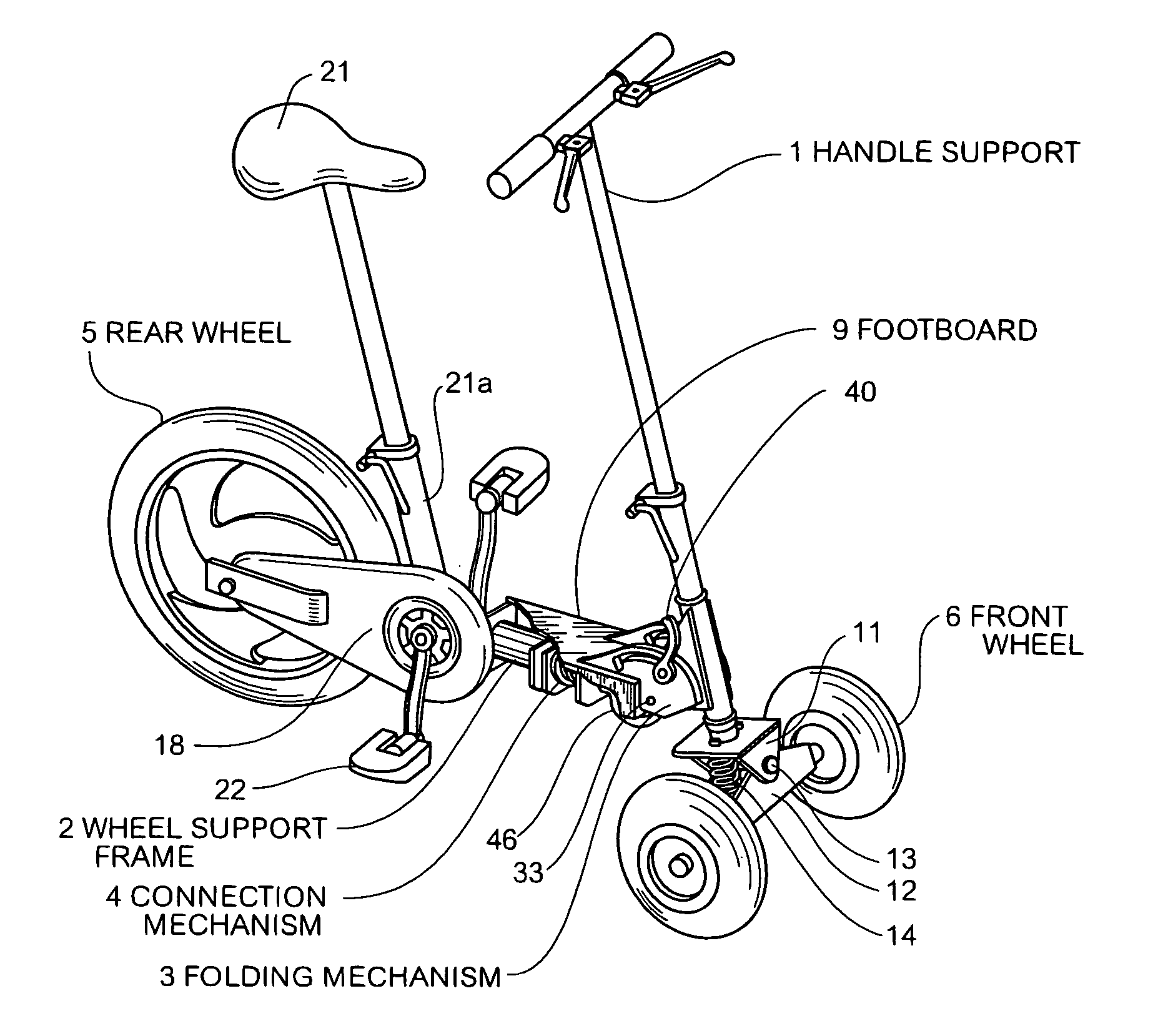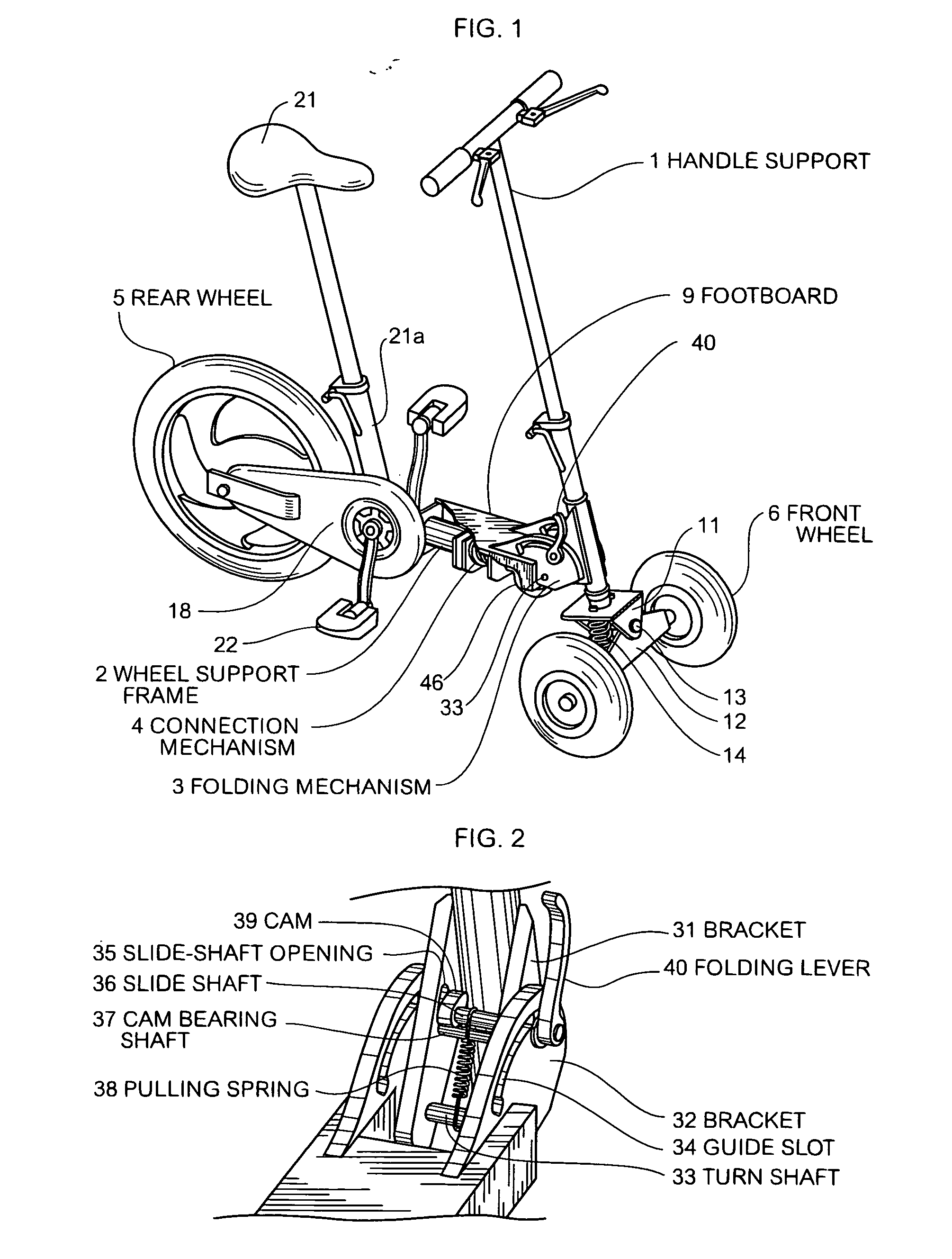Folding bicycle
a folding bicycle and bicycle technology, applied in the field of folding bicycles, can solve the problems of excessively large size, difficulty in carrying the bicycle in a train, bus, or other directions, and achieve the effects of small size, high portability, and excessive large siz
- Summary
- Abstract
- Description
- Claims
- Application Information
AI Technical Summary
Benefits of technology
Problems solved by technology
Method used
Image
Examples
Embodiment Construction
[0065] Description will be made regarding embodiments according to the present invention with reference to the drawings.
[0066] As shown in FIG. 1, a folding bicycle according to an embodiment of the present invention has a configuration wherein a handle support 1 is engaged with a wheel support frame 2 through a folding mechanism 3 which allows switching between a fixed state and a turnable state. Furthermore, a connection mechanism 4 is provided for the aforementioned wheel support frame 2, thereby allowing switching between the fixing state wherein a rear wheel 5 is fixed and the turnable state which allows the user to turn the rear wheel 5 with the aforementioned wheel support frame 2 as a turning axis.
[0067] The lower portion of the handle support 1 is fixed to a metal member 11 having a U-shaped cross-section. Furthermore, another metal member 12 having a U-shaped cross-section is engaged with the metal member 11 having a U-shaped cross-section so as to face one another. Furt...
PUM
 Login to View More
Login to View More Abstract
Description
Claims
Application Information
 Login to View More
Login to View More - R&D
- Intellectual Property
- Life Sciences
- Materials
- Tech Scout
- Unparalleled Data Quality
- Higher Quality Content
- 60% Fewer Hallucinations
Browse by: Latest US Patents, China's latest patents, Technical Efficacy Thesaurus, Application Domain, Technology Topic, Popular Technical Reports.
© 2025 PatSnap. All rights reserved.Legal|Privacy policy|Modern Slavery Act Transparency Statement|Sitemap|About US| Contact US: help@patsnap.com



